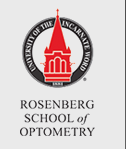Medical Subject Headings
Humans; Male; Female; Infant, Newborn; Cicatrix; Epithelium, Corneal; Photophobia; Lubricant Eye Drops; Anesthetics, Local; Amnion; Ficus; Ulcer; Vision, Low; Slit Lamp Microscopy; Fluorescein; Burns, Chemical; Lubricants; Anti-Bacterial Agents; Follow-Up Studies; Consensus; Emergency Room Visits; 2,d-dichloro-4 bromophenol; Corneal Perforation; Goals; Interior Design and Furnishings; Intraocular Pressure; Ointments; Temperature; Cornea; Eye Infections; Bandages; Pain; Cataract; Anti-Inflammatory Agents; Surgical Instruments; Inflammation; Edema; Morbidity; Steroids; Erythema; Staining and Labeling; Medical Records; Placenta; Outcomes Assessment, Health Care, Contact Lenses; Demography; Foreign Bodies; Perception; Sensation
Abstract
Background: Corneal abrasions are one of the most frequent ocular conditions encountered in the emergency department and can lead to significant morbidity and visual impairment. Amniotic membrane has inherent anti-inflammatory and anti-scarring properties that help accelerate epithelialization and help prevent the complications known to be associated with corneal injuries. Herein we assessed the time till complete epithelialization after in-office application of cryopreserved amniotic membrane in cases of traumatic corneal abrasions in the acute setting.
Case Reports: A total of ten eyes (5 right eye; 5 left eye) of ten consecutive patients (8 Male; 2 Female; average age 40.9 ± 17.8 years) were included with initial complaints of ocular pain (n=5), blurred vision (n=9), photophobia (n=3), and tearing (n=5). All patients presented with corneal abrasions were observed by slit-lamp with fluorescein staining. Self-retained, cryopreserved amniotic membrane was placed for an average 1.9 ± 0.7 days. Complete corneal epithelialization was noted in 2 (20%) eyes at 1 day, 5 (50%) eyes at 2 days, 2 (20%) eyes at 3 days, and 1 (10%) eye at 7 days without any residual corneal scarring or haze. One eye of a patient had residual light sensitivity at 3 days. No complications were noted.
Conclusions: These preliminary results suggest clinical benefit of self-retained cryopreserved amniotic membrane in the treatment of acute traumatic corneal epithelial abrasions. Prompt in-office treatment for a short duration led to complete healing without complication.
Recommended Citation
Goldberg L. Cryopreserved Amniotic Membrane for Corneal Epithelial Abrasions: Case Series. Optometric Clinical Practice. 2025; 7(2):27. https://doi.org/10.37685/uiwlibraries.2575-7717.7.2.1041
Creative Commons License

This work is licensed under a Creative Commons Attribution 4.0 International License.
Digital Object Identifier (DOI)
10.37685/uiwlibraries.2575-7717.7.2.1041
Included in
Adult and Continuing Education and Teaching Commons, Health and Physical Education Commons, Optometry Commons, Other Education Commons, Other Medicine and Health Sciences Commons, Other Teacher Education and Professional Development Commons

